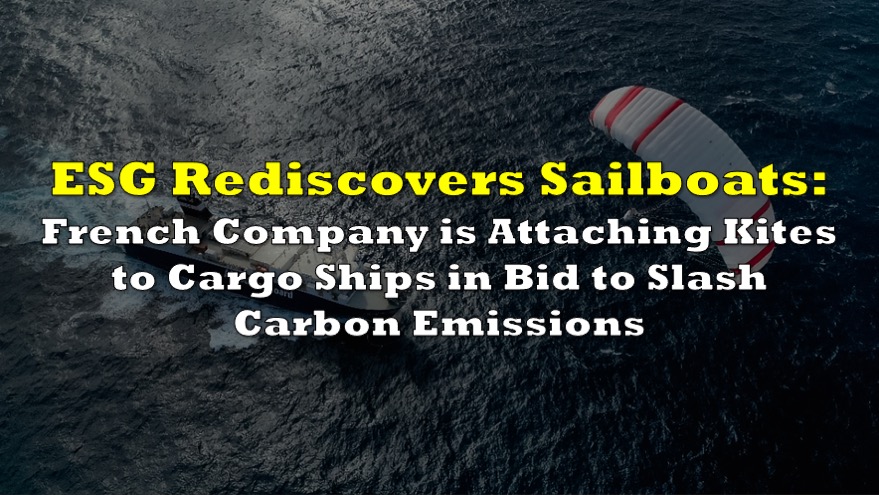Airseas, a French company, is harnessing wind power to develop a technology called Seawing, intended to significantly reduce fuel consumption and carbon emissions of cargo ships. Those smarty pants at the French company, Airseas, are going to achieve this by— wait for it— doing what has been done before the invention of the steam engine: attaching sails to the boat.
Let’s go! pic.twitter.com/Orb1RTLHcN
— Katie Scarlett (@Katiescarlet2) July 3, 2023
The mad scientists behind this venture are two engineers from Airbus who, back in 2016, figured they’d use the same principle as a kid’s kite surfing lesson and apply it to cargo ships. This system, affectionately dubbed the Seawing, is essentially a massive 1,000-square-meter kite that helps propel a cargo ship across the ocean. It’s like someone rediscovered the concept of the Mayflower and thought, “let’s give it a 21st-century upgrade.”

The shipping industry, largely powered by fossil fuels, has little cheap alternatives when it comes to energy sources, because, well, the seas are just too mighty for green initiatives. But, Vincent Bernatets, the co-founder and CEO of Airseas, asserts that wind power presents a critical interim solution.
While wind has been used to propel ships for thousands of years, the Seawing, a parafoil much like those used in kitesurfing, is attached to a 700-meter-long cable that transmits power and data to and from the ship.
Watch Seawing in action, flying in the middle of the Atlantic! Our sea trials have validated our design in real-life operations, and we look forward to accelerating the development of our solution to reduce emissions from shipping!
— Airseas (@Airseas_Tech) December 6, 2022
#seawing #windpower pic.twitter.com/bWWESU9HOB
Unlike other wind-assisted solutions, the Seawing doesn’t simply harness wind power. It utilizes a “figure-of-eight” flight pattern, effectively magnifying the pulling force of the wind. This, combined with the fact that the kite flies 300 meters above sea level where wind is 50% more potent, results in what Bernatets describes as “crazy power.” The technology is supposedly compact, installs on the bow of any ship, and does not necessitate vessel retrofitting.
Ha! It's called a schooner! pic.twitter.com/YBFdNaxPxL
— Kyle A (@Puppy69us) July 3, 2023
Over the past year, a smaller 250-square-meter version of the Seawing has undergone testing on an Airbus-chartered cargo ship sailing the Atlantic. By May of this year, the kite had successfully towed the ship, and now they’re looking to scale up the operation come December.
Airseas has received €2.5 million in funding from the EU, and orders from Airbus and Japanese shipping company “K” Line, with plans to fully operationalize the technology by 2025.
However, some challenges persist. According to Dr. Richard Pemberton, a lecturer in Mechanical and Marine Engineering Design at the University of Plymouth, the system’s performance is dependent on wind direction. The Seawing can’t function when sailing directly into the wind, and some wind must be present for it to operate at all.
Well I guess the French aren't getting their stuff then.
— Simon G. Tupper (@SG_Tupper) July 3, 2023
Information for this story was found via Seawing and the sources mentioned. The author has no securities or affiliations related to the organizations discussed. Not a recommendation to buy or sell. Always do additional research and consult a professional before purchasing a security. The author holds no licenses.




